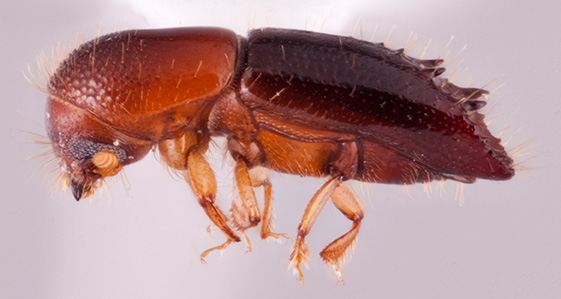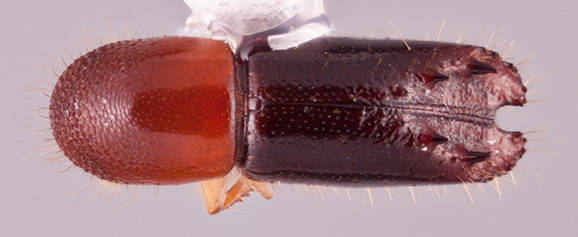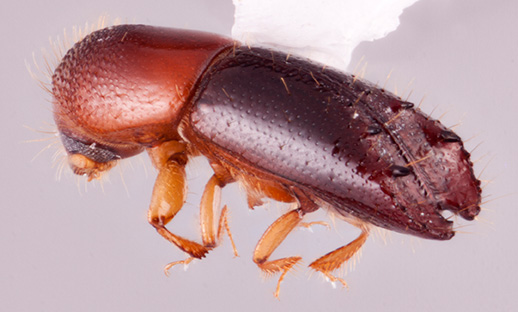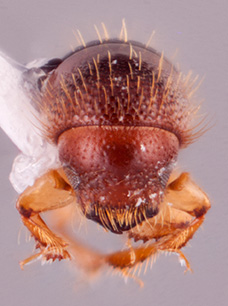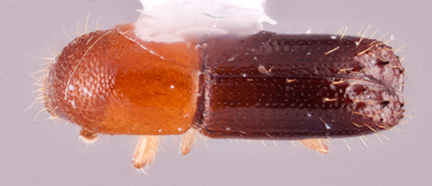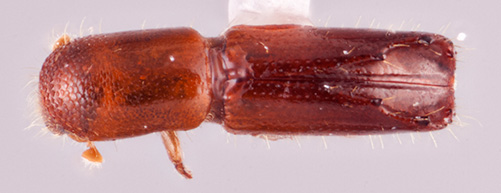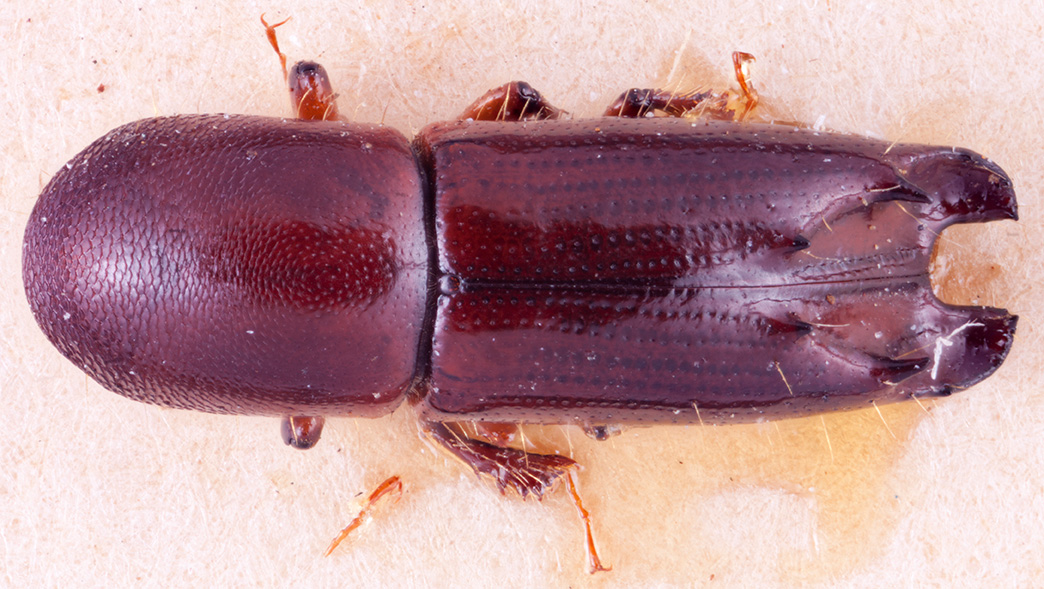Debus
|
Debus quadrispinus; R.K. Osborn |
|
Debus quadrispinus; R.K. Osborn |
|
Debus quadrispinus; R.K. Osborn |
|
Debus quadrispinus; R.K. Osborn |
|
Debus pumilus; R.K. Osborn |
|
Debus adusticollis; R.K. Osborn |
|
Debus amphicranoides; R.K. Osborn |
Taxonomy
Debus Hulcr and Cognato, 2010a: 13.
Diagnosis
2.20−5.40 mm long, 2.68−3.85 times as long as wide. Debus can be distinguished by the pronotalpronotal:
pertaining to the pronotum
discdisc:
the flat central upper surface of any body part (e.g. pronotum and elytra) elongate and flat, pronotumpronotum:
elongate and flat, pronotumpronotum:
the dorsal surface of the thorax
from dorsaldorsal:
of or relating to the upper surface; opposite of ventral
 view long, rounded frontally (type 9); elytralelytral:
view long, rounded frontally (type 9); elytralelytral:
pertaining to the elytra
apexapex:
point or edge furthest from the body; opposite of base
 emarginate; elytraelytron:
emarginate; elytraelytron:
the two sclerotized forewings of beetles that protect and cover the flight wings
typically strongly excavatedexcavated:
with a depression that is not in a segment of a circle
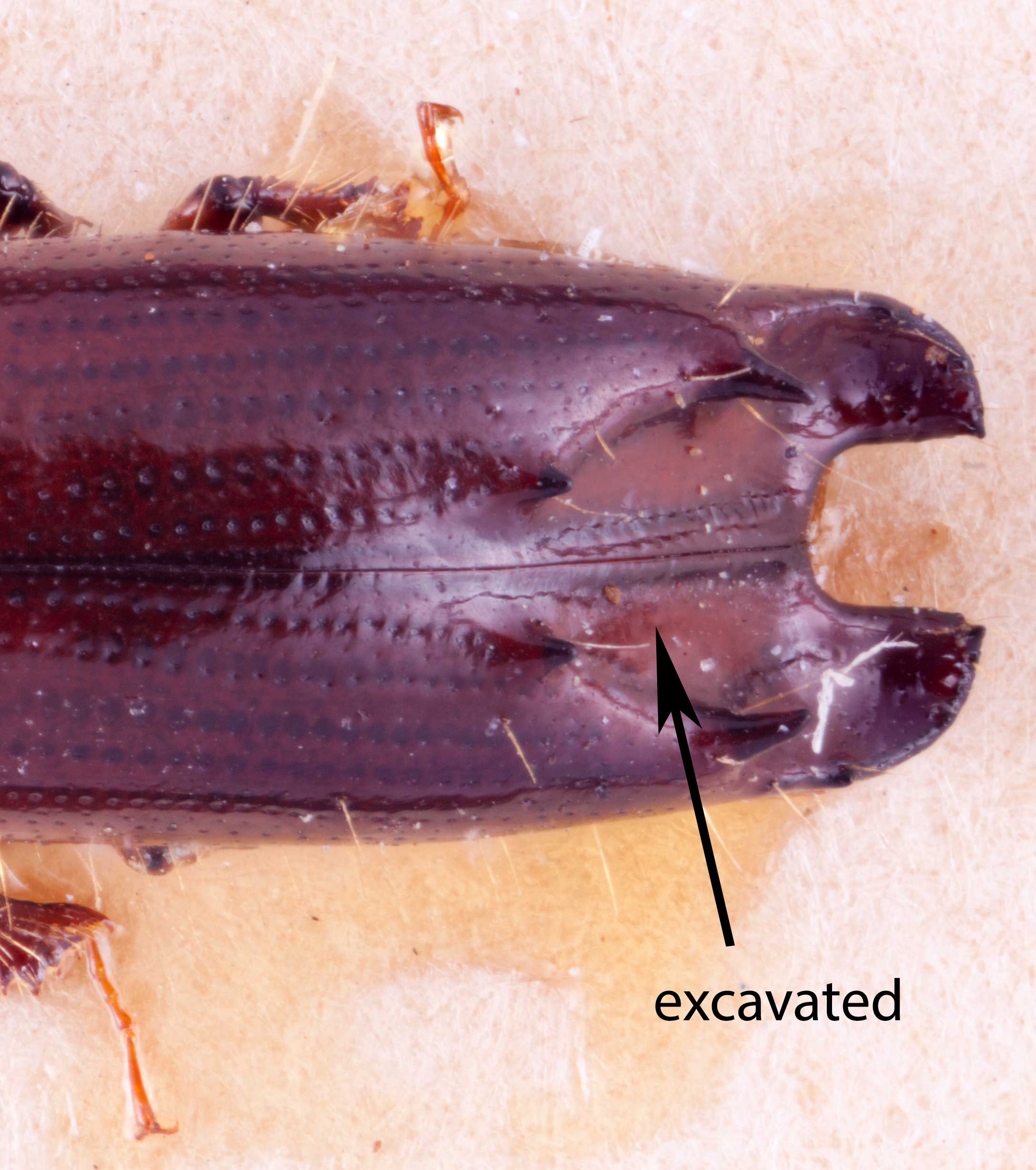 and explanateexplanate:
and explanateexplanate:
spread out and flattened; applied to a margin
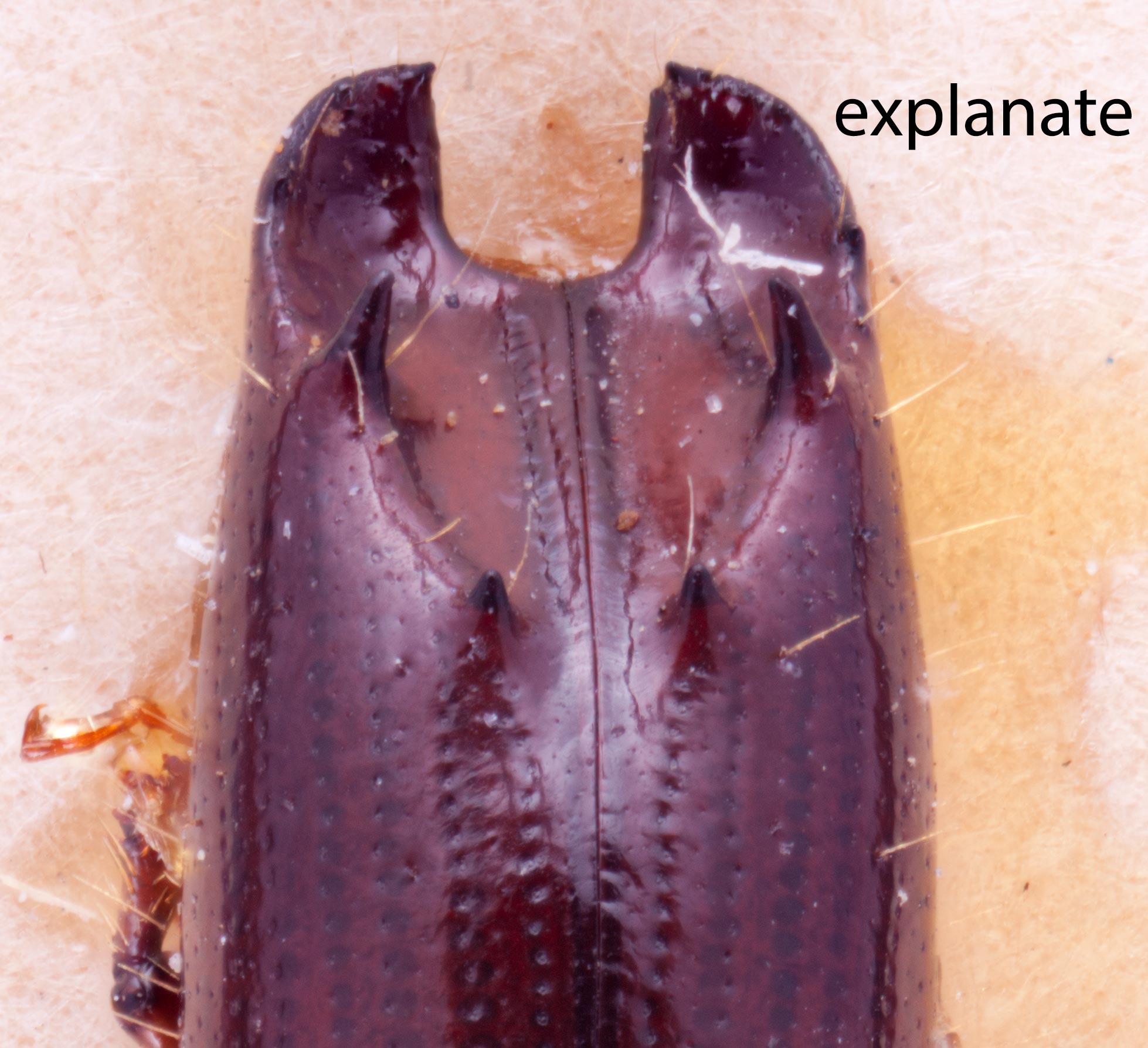 ; first declivitaldeclivital:
; first declivitaldeclivital:
pertaining to the elytral declivity
interstriae broadened, laterally displacing strial punctures; protibiaeprotibia:
tibia of the first pair of legs
distinctly triangular with fewer than 6 large denticlesdenticle:
a small tooth, the sides of which are equal and the tip is above the middle of the base on laterallateral:
on laterallateral:
pertaining to the side
 margin. In addition, mycangial tufts are absent, procoxae are contiguous, and the scutellumscutellum:
margin. In addition, mycangial tufts are absent, procoxae are contiguous, and the scutellumscutellum:
a shield-like sclerotized plate located at the midpoint of the elytral base
is flat and flush with the elytraelytron:
the two sclerotized forewings of beetles that protect and cover the flight wings
.
May be confused with
Distribution
common in tropical forests throughout South Asia to the far reaches of the Pacific Ocean
Gallery system
This usually has a transverse surface gallery between the bark and wood, part of which is expanded by the larvae into a brood chamber in which many of them develop. Further branching tunnels penetrate directly into the wood. These too develop brood chambers in the longitudinal plane. Brood development proceeds normally in the wood, if the tree is debarked. In some species (e.g. D. adusticollis (Motschulsky)), surface galleries and brood chambers have not been observed (Kalshoven 1959bKalshoven 1959b:
Kalshoven LGE. 1959b. Studies on the biology of Indonesian Scolytoidea 4. Data on the habits of Scolytidae. Second part. Tijdschrift voor Entomologie 102: 135-173 + pls. 15-22., Browne 1961bBrowne 1961b:
Browne FG. 1961b. The biology of Malayan Scolytidae and Platypodidae. Malayan Forest Records 22: 1-255.).

